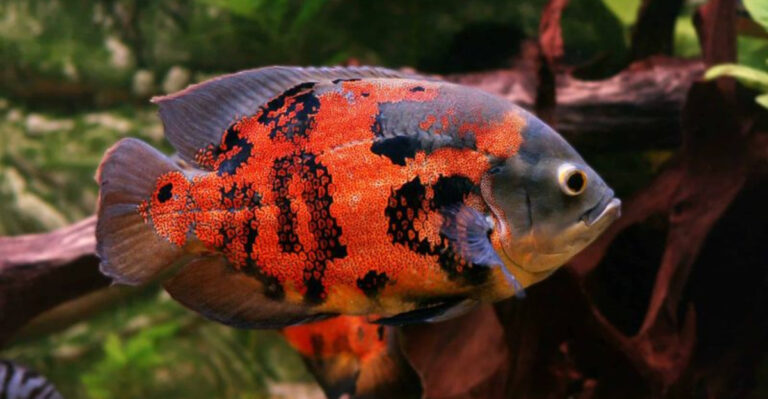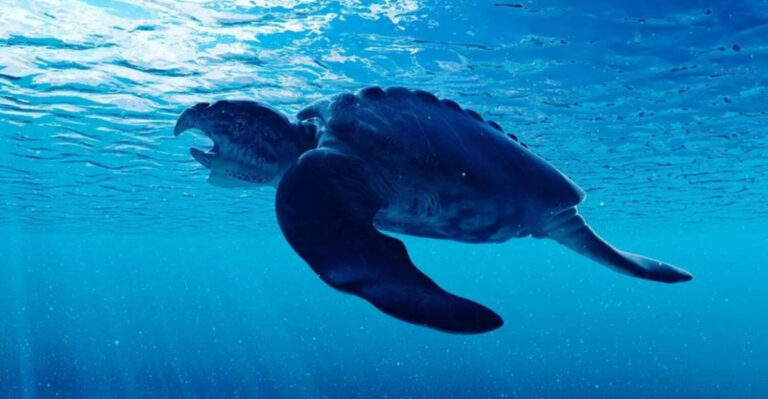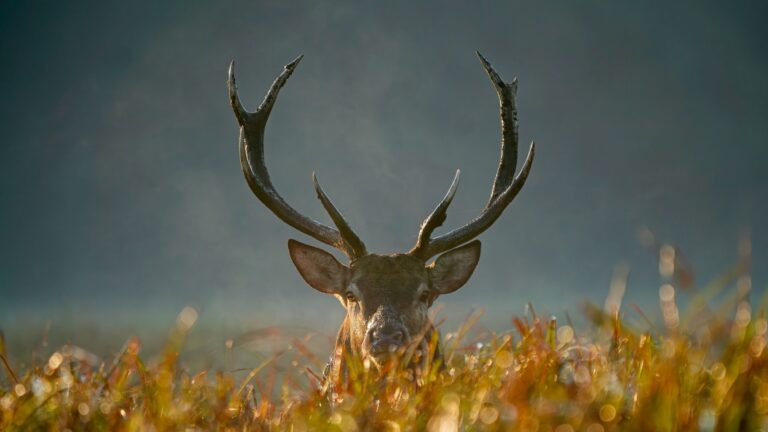15 Magnificent Ocean Creatures You Won’t Believe Actually Exist
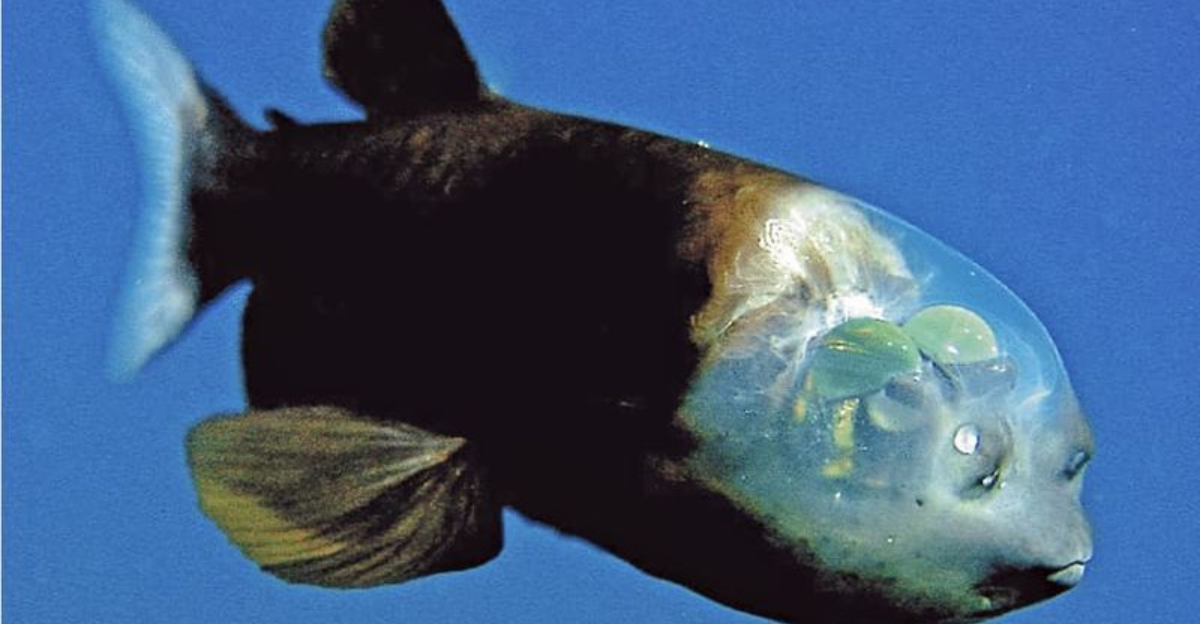
Our oceans hide some of the strangest and most beautiful animals on Earth. From the deepest trenches to colorful coral reefs, these mysterious waters contain creatures that seem straight out of science fiction.
While we’ve all heard of sharks and dolphins, the ocean holds far weirder treasures most people never get to see. Get ready to meet some of the most bizarre and magnificent animals that call our oceans home!
1. Blobfish: The Melting Face Of The Deep
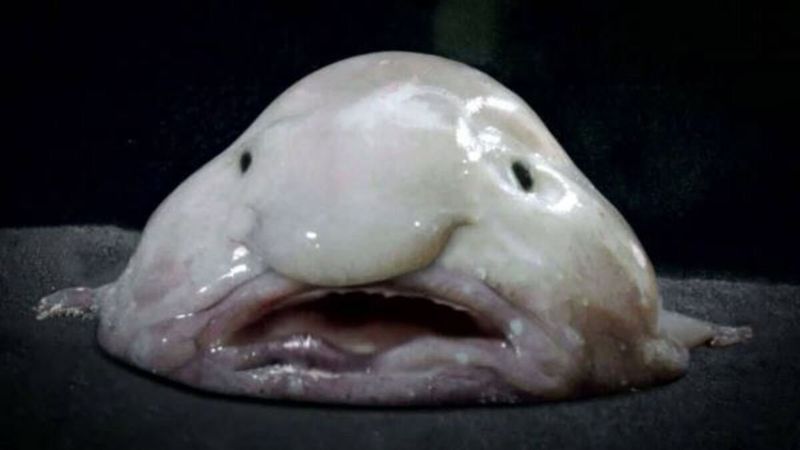
Normal-looking in its natural habitat 3,000 feet underwater, the blobfish transforms into a sad, droopy mess when brought to the surface. Without the crushing pressure to maintain its shape, its gelatinous body collapses into the famously glum appearance that earned it the title of ‘World’s Ugliest Animal’ in 2013.
Despite its unfortunate looks, this remarkable fish solves a deep-sea survival puzzle.
Instead of swimming to chase food, it simply floats slightly above the ocean floor, opening its mouth to catch whatever edible particles drift by.
2. Mantis Shrimp: The Rainbow Knockout Artist

Sporting the most complex eyes in the animal kingdom, mantis shrimp can see colors humans can’t even imagine. Their psychedelic appearance matches their extraordinary abilities – they throw the fastest punch in nature, striking with the force of a .22 caliber bullet!
These tiny terrors (usually under 7 inches long) can smash aquarium glass with their specialized club-like appendages.
The strike happens so quickly it creates cavitation bubbles that collapse with a flash of light and temperatures nearly as hot as the sun’s surface.
3. Japanese Spider Crab: The Walking Nightmare
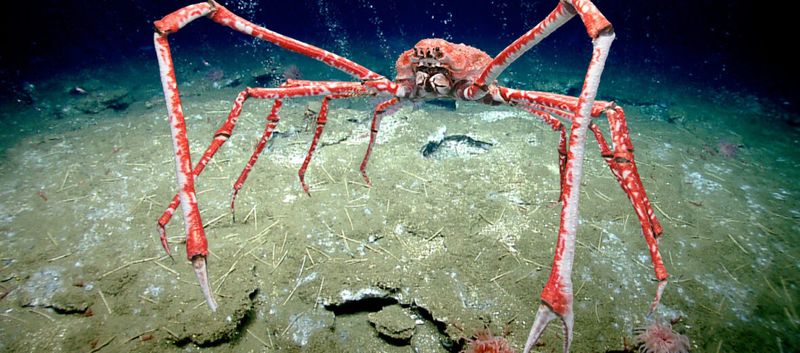
Picture meeting a crab with legs spanning up to 13 feet across – longer than a car! Japanese spider crabs hold the record for largest arthropod leg span, creating an imposing figure as they creep along the ocean floor. Their orange-spotted bodies resemble pumpkins mounted on spindly stilts.
Amazingly gentle despite their terrifying appearance, these giants can live over 100 years in their deep-sea habitat.
They scavenge the seafloor around Japan, using their powerful claws to crack open shellfish and their specialized front legs to bring food to their mouths.
4. Dumbo Octopus: The Adorable Deep-Sea Elephant
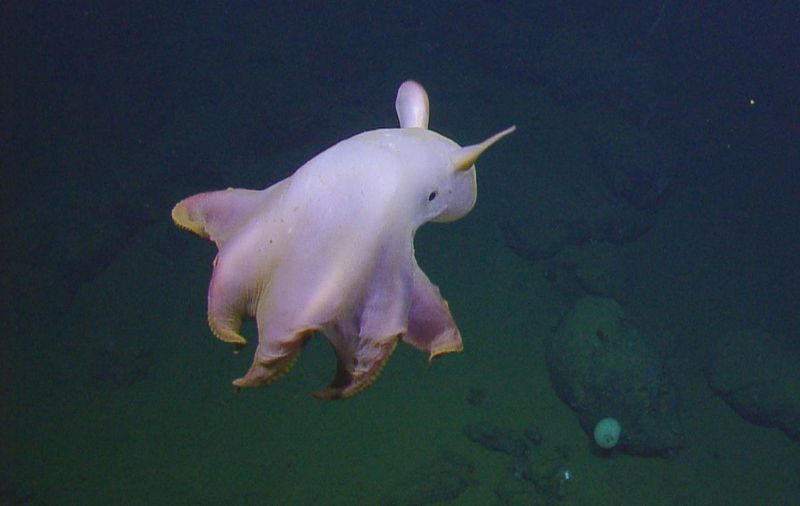
Named after Disney’s flying elephant, these charming octopuses have ear-like fins that flap gracefully as they move through the darkest depths of our oceans. Unlike their shallow-water cousins, dumbo octopuses don’t spray ink or change colors – adaptations unnecessary in their lightless home up to 13,000 feet below the surface.
Among the rarest octopuses, they’re also the deepest-dwelling of all. Their semi-transparent bodies pulse with a ghostly blue glow as they hover above the seafloor.
Most measure just 8-12 inches long, making their cute appearance even more endearing to human observers.
5. Barreleye Fish: The See-Through Head Hunter
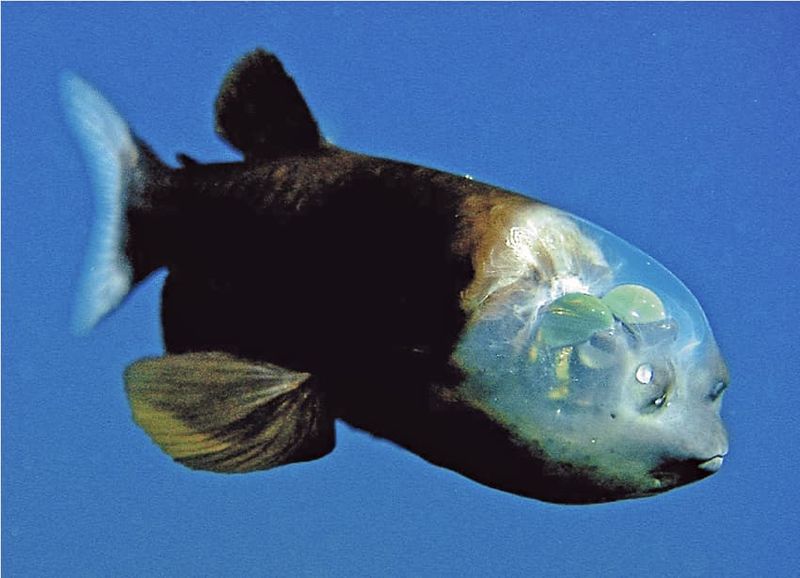
Imagine having a transparent dome for a head with your eyes floating inside it! Barreleye fish possess this exact bizarre feature – a clear, fluid-filled shield protecting tubular, extremely light-sensitive eyes that can rotate upward to spot prey above them.
Scientists were baffled for decades because captured specimens’ delicate heads always collapsed. Only when observed alive in their natural habitat did researchers discover the transparency.
These strange fish hover motionless in the twilight zone (600-3,000 feet deep), watching for the silhouettes of tiny crustaceans against the faint sunlight filtering from above.
6. Gulper Eel: The Living Vacuum Cleaner
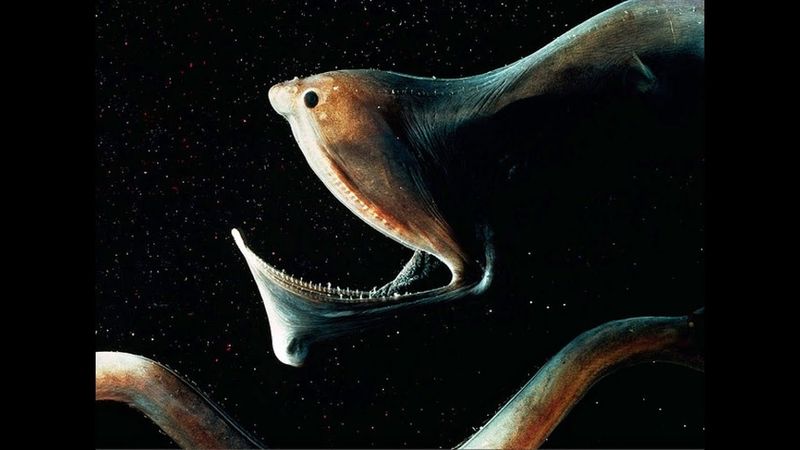
With a mouth several times larger than its body, the gulper eel transforms from a thin, unremarkable fish into a gaping black void when feeding. Its jaw unhinges snake-like, allowing it to swallow prey much larger than itself in a single gulp – hence its fitting name.
A bioluminescent tip on its tail acts as a lure, drawing curious fish closer to its enormous mouth. Rarely seen alive, these bizarre creatures inhabit depths between 3,000-6,000 feet. When not feeding, they fold their massive jaws against their bodies, looking like ordinary eels as they navigate the darkness with their ribbon-like tails.
7. Vampire Squid: The Living Fossil From Hell
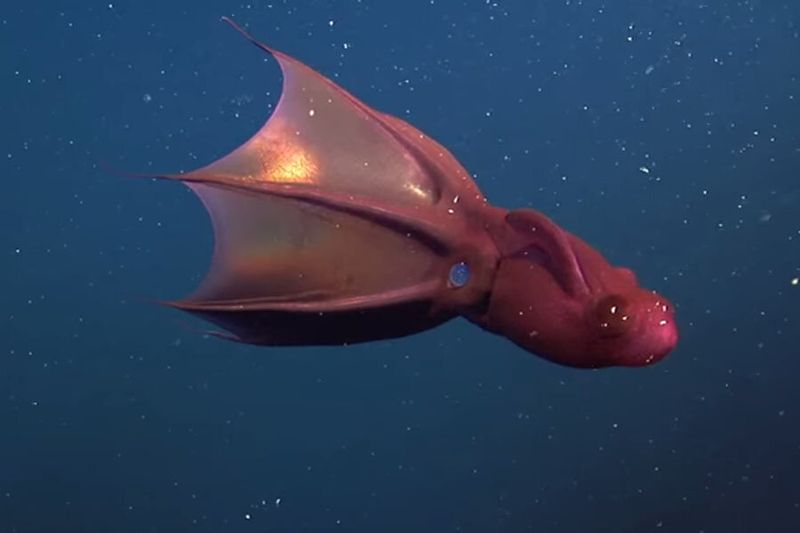
Despite its terrifying name (Vampyroteuthis infernalis, literally “vampire squid from hell”), this ancient creature is actually quite gentle. Neither a true squid nor an octopus, it’s the only surviving member of its own order, having evolved over 300 million years ago.
When threatened, it doesn’t flee or fight – it turns itself inside out! Wrapping its webbed arms around its head, it transforms into a spiky ball covered with glowing blue photophores.
Living in oxygen-depleted waters where few predators venture, these living fossils feed on marine snow – the constant shower of organic debris falling from above.
8. Frilled Shark: The Swimming Dinosaur
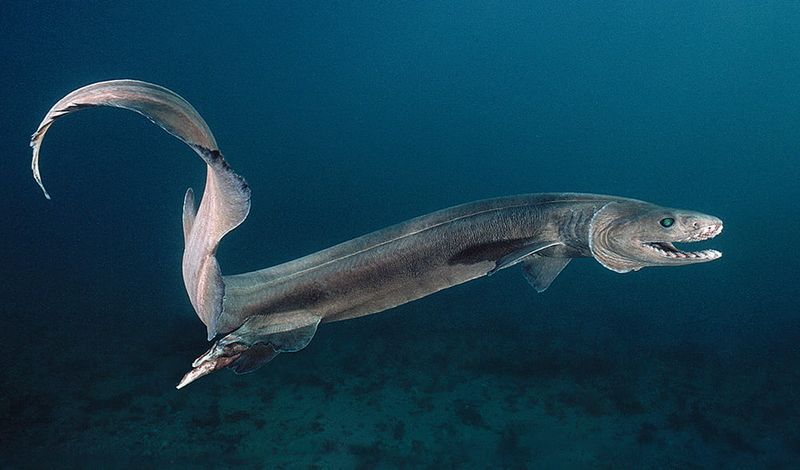
Often called a “living fossil,” the frilled shark has remained virtually unchanged for 80 million years. With its elongated, eel-like body and unusual arrangement of 300 needle-sharp teeth in 25 rows, it looks like something that should have died alongside the dinosaurs.
These primitive sharks hunt using a lunging motion, bending their bodies and striking like snakes. Rarely encountered by humans, they typically live at depths of 2,000-5,000 feet. Scientists believe they may use their bright white mouth lining to attract prey in the darkness, luring curious fish directly into their terrifying jaws.
9. Leafy Seadragon: The Ocean’s Master Of Disguise
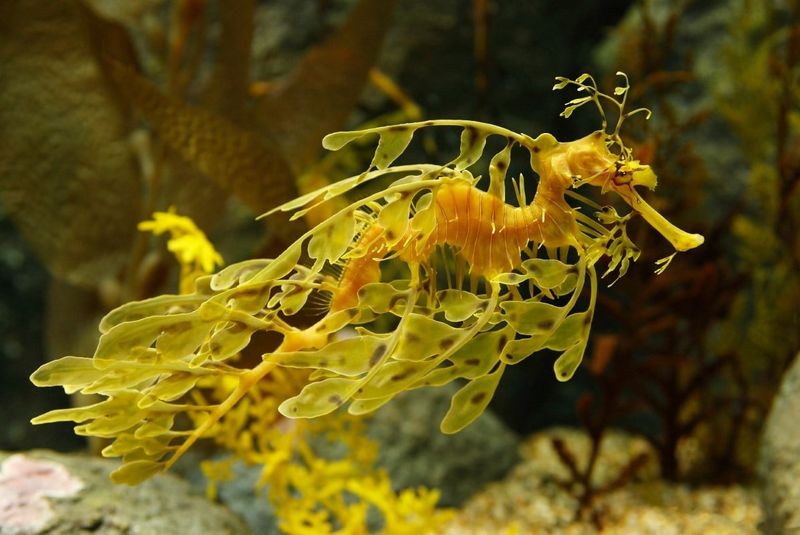
Looking more like a floating piece of seaweed than an animal, leafy seadragons represent nature’s pinnacle of camouflage. Their bodies are adorned with elaborate leaf-like appendages that flow with the ocean currents, making them nearly impossible to spot among actual seaweed.
Related to seahorses, these delicate creatures move by means of nearly invisible fins that ripple at up to 70 beats per second.
Unlike their seahorse cousins, male leafy seadragons don’t carry eggs in a pouch – instead, females attach up to 300 bright pink eggs directly onto a special patch on the male’s tail, where he’ll protect them until they hatch.
10. Goblin Shark: The Living Nightmare
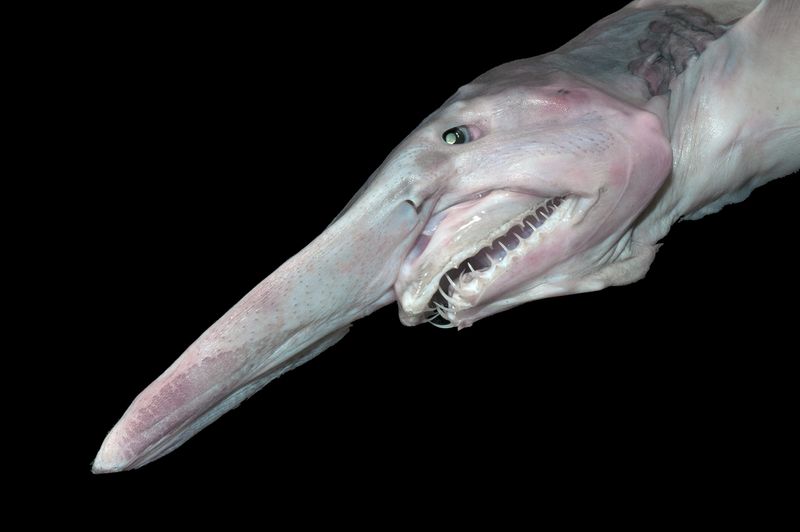
Imagine a shark with a sword-like snout and jaws that shoot forward out of its face when attacking! The goblin shark’s bizarre feeding mechanism allows its teeth to rapidly project forward, snatching prey before the creature even gets close. This pink-skinned deep-sea horror has remained virtually unchanged for 125 million years.
Scientists rarely encounter living specimens, as they typically dwell at depths exceeding 4,000 feet. Their soft, flabby bodies and weak muscles suggest they’re ambush predators rather than active hunters.
With poor eyesight, they rely on special sensory organs in their protruding snouts to detect the electrical fields generated by nearby prey.
11. Mimic Octopus: The Ultimate Shapeshifter
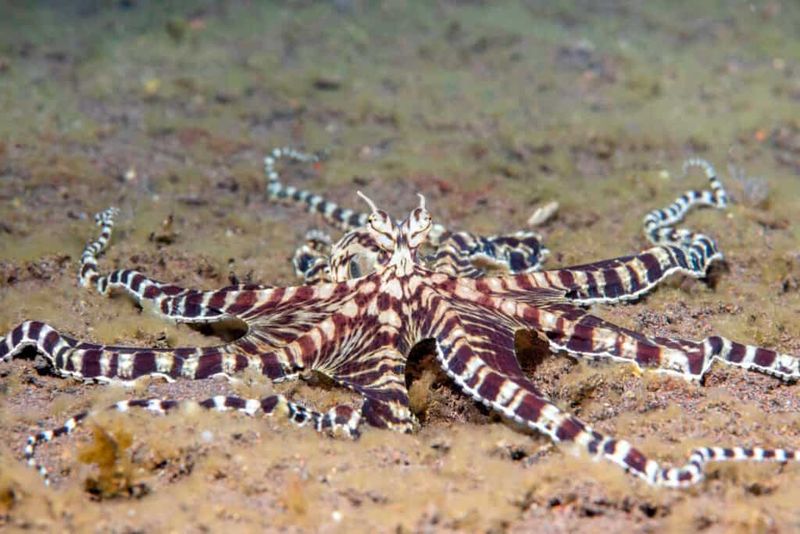
Discovered only in 1998, the mimic octopus possesses an ability previously thought impossible – it can impersonate multiple different marine species! Beyond changing color like other octopuses, it actually transforms its entire body shape and movement patterns to mimic dangerous creatures like sea snakes, lionfish, and flatfish.
Scientists have documented this remarkable octopus pretending to be at least 15 different species. When impersonating a sea snake, it buries six arms in the sand and extends two in opposite directions, undulating them to perfectly mimic the deadly snake’s movements.
This extraordinary talent helps it avoid predators who would think twice about attacking what appears to be a venomous creature.
12. Axolotl: The Smiling Regeneration Master
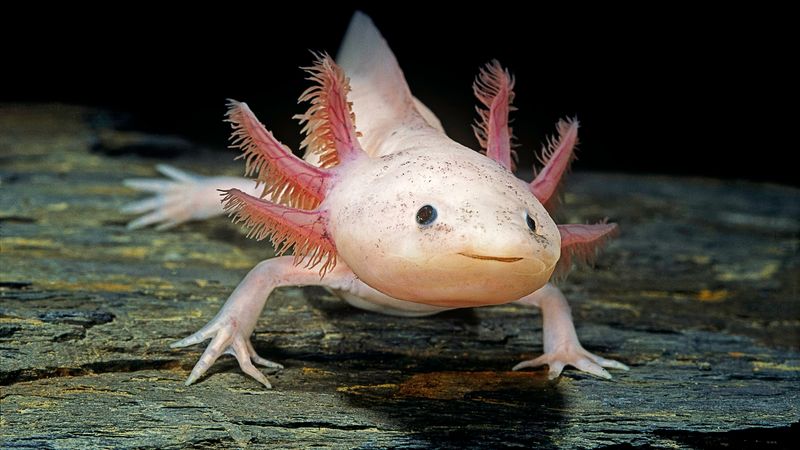
Though they look like something from another planet with their perpetual smiles and feathery external gills, these critically endangered salamanders were once common in Mexican lakes. Axolotls possess the remarkable ability to regrow almost any body part – including portions of their brain and heart – without scarring.
Unlike most amphibians, axolotls never undergo metamorphosis, remaining in a juvenile aquatic form their entire lives – a condition called neoteny. Scientists study them extensively to understand regeneration, hoping to unlock medical breakthroughs.
With fewer than 1,000 remaining in the wild, these smiling creatures face extinction due to pollution, habitat destruction, and introduced predatory fish.
13. Narwhal: The Unicorn Of The Sea
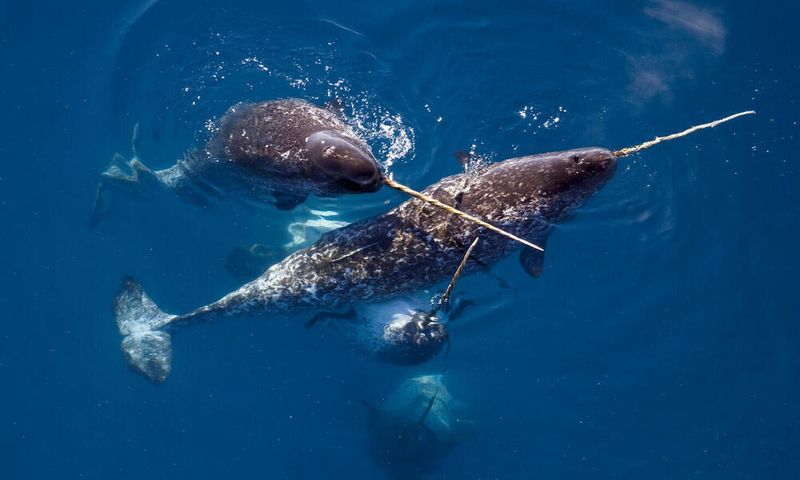
The stuff of legends, narwhals sport a single spiral tusk that can grow up to 10 feet long – actually an elongated tooth that protrudes through the upper lip. Medieval Europeans believed these tusks came from unicorns, selling them for many times their weight in gold as magical artifacts.
Scientists have only recently discovered the tusk’s true purpose. Packed with millions of nerve endings, it serves as a sensory organ that can detect subtle changes in water temperature, pressure, and particle gradients.
Males sometimes cross tusks in a behavior called “tusking” – possibly to establish dominance or to share sensory information about their Arctic habitat.
14. Anglerfish: The Deep-Sea Nightmare With A Fishing Rod
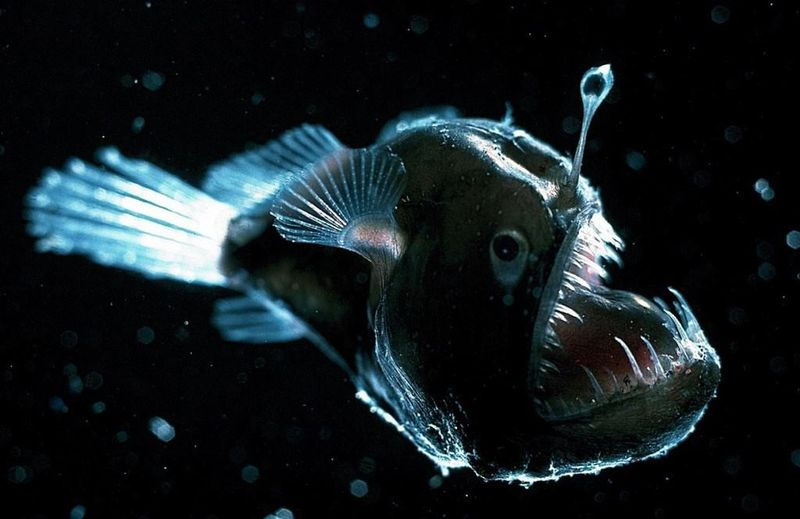
Famous for the bioluminescent lure dangling from its head, the female anglerfish uses this built-in fishing rod to attract prey in the pitch-black deep sea. When smaller fish approach the glowing bait, they’re suddenly engulfed by the anglerfish’s enormous mouth lined with needle-like teeth.
The bizarre mating habits of anglerfish seem straight from science fiction. Males are tiny compared to females and lack lures entirely.
When a male finds a female, he bites into her body and literally fuses with her, eventually dissolving until he’s nothing but a pair of gonads providing sperm when she’s ready to reproduce.
15. Comb Jellies: The Rainbow Light Show
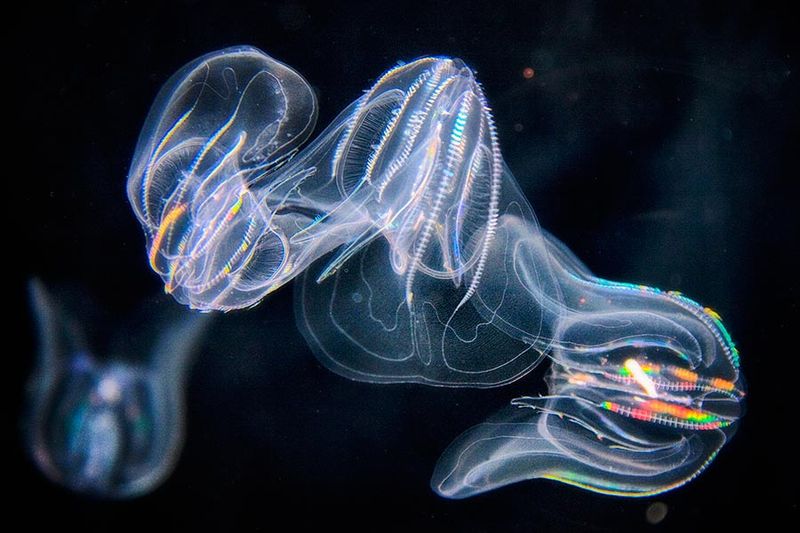
Not true jellyfish at all, comb jellies are ancient creatures that put on one of the ocean’s most spectacular light shows. Their transparent bodies are lined with rows of tiny hair-like cilia that scatter light as they beat, creating shimmering rainbows that pulse along their bodies as they swim.
Among the earliest animals to evolve on Earth, some species can regenerate their entire bodies from just a tiny fragment.
Many comb jellies also produce their own light through bioluminescence, glowing blue or green when disturbed. Unlike jellyfish, they have no stinging cells, instead capturing prey using sticky cells called colloblasts that line their tentacles.



